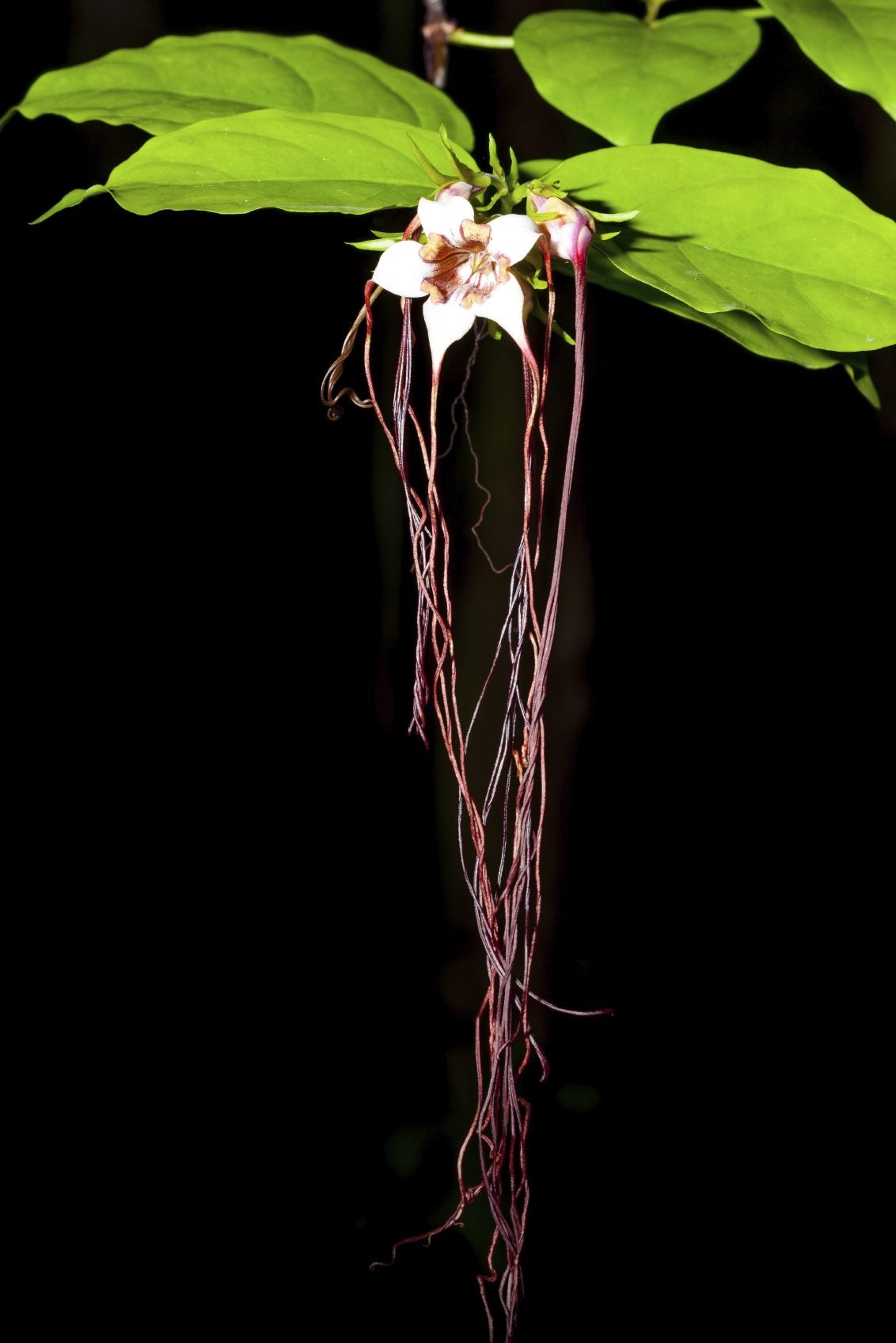Strophanthus Plant Care: How To Grow Spider Tresses


Strophanthus preussii is a climbing plant with unique streamers hanging from the stems, boasting white flowers with robust rust colored throats. It is also called spider tresses or poison arrow flower. These are fussy plants that require hot tropical conditions in low to dappled light. A few tips on how to grow spider tresses will be useful as you care for this temperamental plant.
The Strophanthus Preussii Plant
Strophanthus preussii plant hails from forest areas of Africa. It prefers moist areas and flowers in the first part of the dry season, with fruit forming at the end of the dry period. Once the rains arrive, it commences woody and foliar growth, getting nearly 40 feet in length in its native habitat. In cultivation, you can expect it to be significantly shorter. Strophanthus cultivation is not for the novice gardener, as this plant is very particular about its care and situation. Often found along forest edges and inside highly varied timber stands with heavy shade and moist conditions, spider tresses grows as a shrub and is useful as an ornamental container plant in domestic cultivation. It has glossy leaves and trumpet-shaped flowers with unusual drooping streamers. Strophanthus plant care is very specific, as the plant is not very flexible in its needs. The first important issue is to provide the proper soil for the plant. Choose a container that is at least twice as large in diameter as the plant's nursery pot. Loosen the roots carefully and pot up in a mixture of loam and peat or compost.
How to Grow Spider Tresses
In most zones, indoors is the best situation for growing a spider tress plant. However, it may be grown outdoors in United States Department of Agriculture zones 10 to 11. Keep your Strophanthus moist, but not soggy, and place the pot in indirect light for best growth. It starts out as a shrub but may push out longer stems that get rangy, so pinch it back to keep a compact shape. Strophanthus cultivation requires moderate humidity and consistently warm temperatures. Outdoor plants need to be brought in before cool temperatures arrive. Fertilize in spring with a light diluted plant food or time release granules.
Additional Strophanthus Plant Care
In perfect conditions, the plant will send out feelers of vertical growth, which may be trained to a stake or trellis. It should be repotted every couple of years to enhance the growing medium and provide plenty of humic rich soil. Care should be taken not to touch the sap, which has low levels of glycosides and can cause health implications. Propagation is through soft wood cuttings in spring or seed. The fruit is a long pod bearing the seed. Allow it to dry on the plant and then split open the pod to access the seed. Plant them immediately in well-draining, alkaline soil. Keep seeds moist in a low light area until seedlings emerge and then move them to a slightly brighter area. Growing a spider tress plant requires some patience to create the right environment for this distinctive Strophanthus. The effort is worth it once your plant develops the fabulous blooms and can provide the showy display for many years with excellent care.
Sign up for the Gardening Know How newsletter today and receive a free copy of our e-book "How to Grow Delicious Tomatoes".

Bonnie Grant is a professional landscaper with a Certification in Urban Gardening. She has been gardening and writing for 15 years. A former professional chef, she has a passion for edible landscaping.